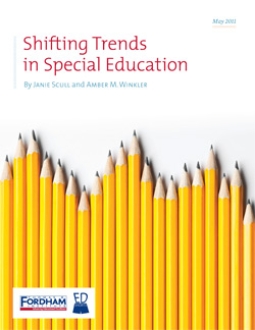In this Fordham Institute paper, analysts examine public data and find that the national proportion of students with disabilities peaked in 2004-05 and has been declining since. This overall trend masks interesting variations; for example, proportions of students with specific learning disabilities, mental retardation, and emotional disturbances have declined, while the proportions of students with autism, developmental delays, and other health impairments have increased notably. Meanwhile, at the state level, Rhode Island, New York, and Massachusetts have the highest rates of disability identification, while Texas, Idaho, and Colorado have the lowest. The ratio of special-education teachers and paraprofessionals to special-education students also varies widely from state to state—so much so that our analysts question the accuracy of the data reported by states to the federal government.
Policy Priority:
Topics:





